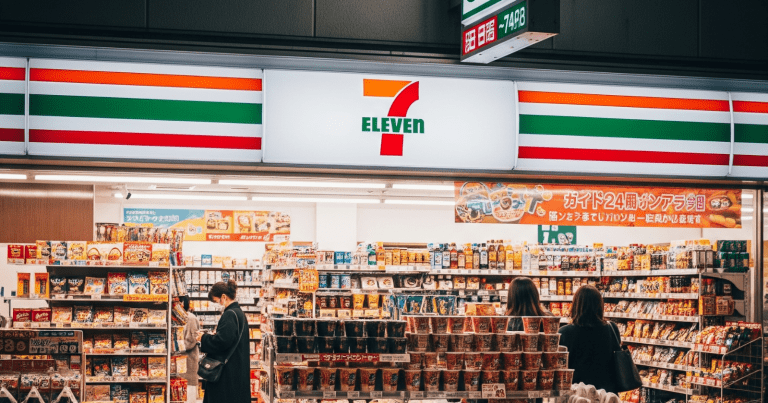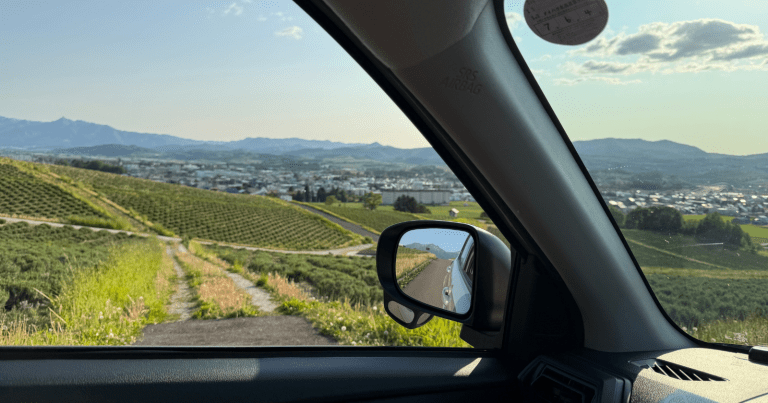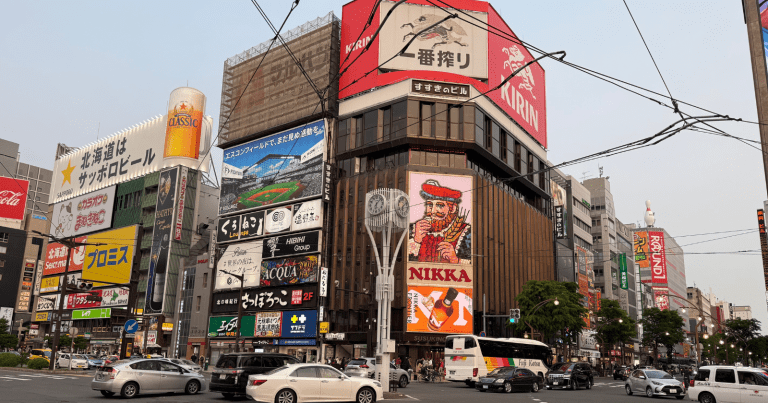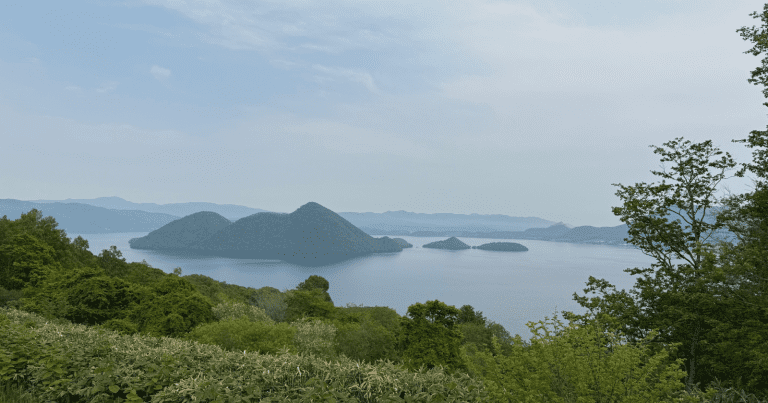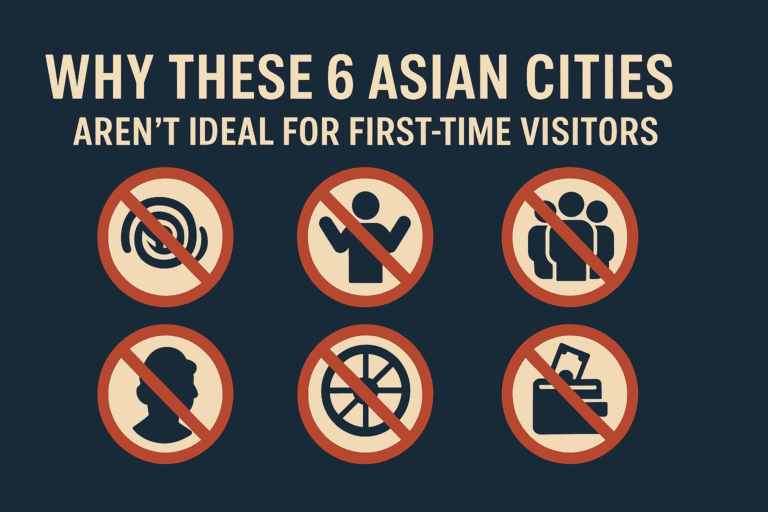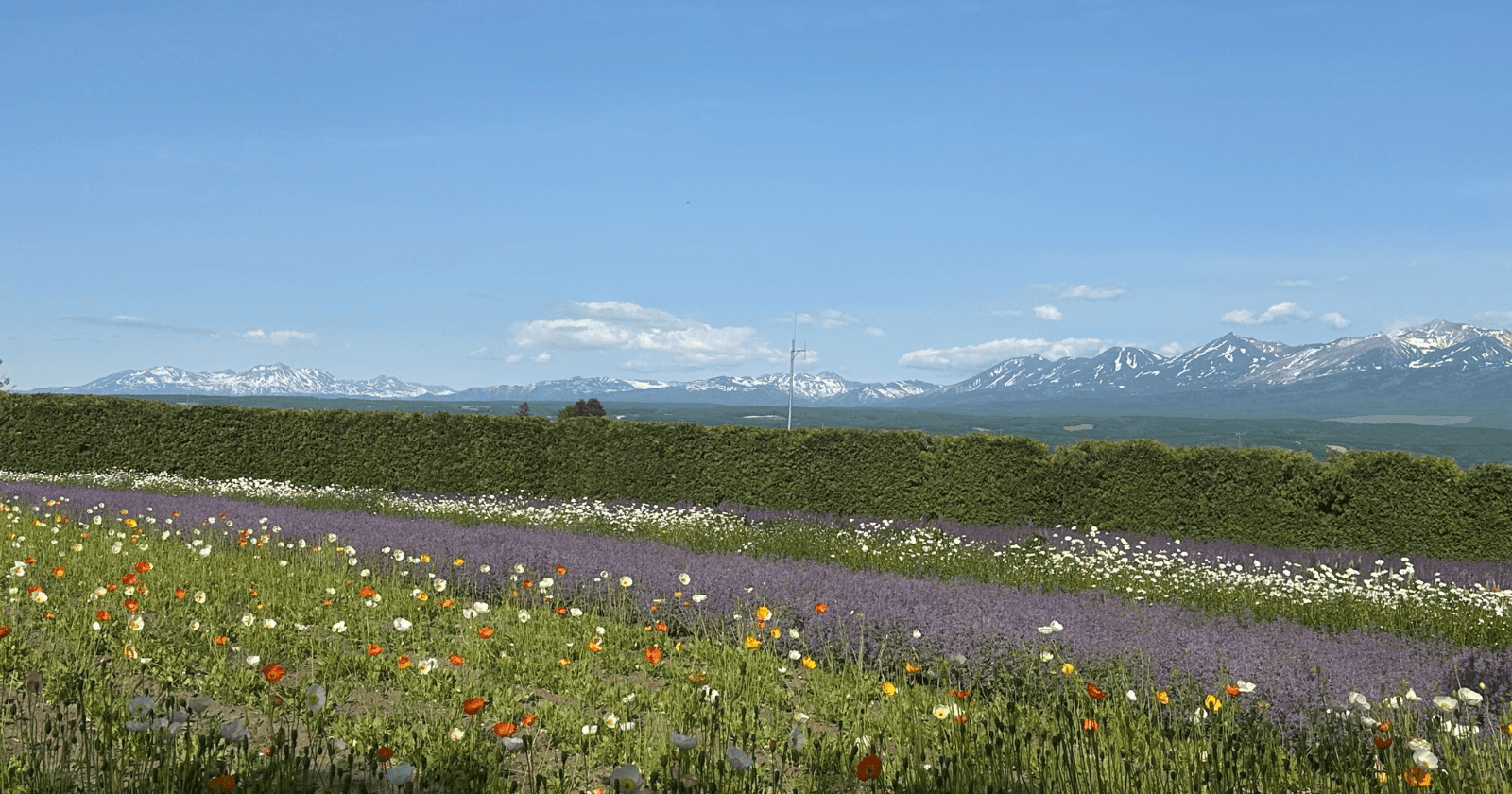
Sometimes, the most profound travel experiences are the ones you least expect. We embark on journeys with guidebooks clutched tight, searching for the “must-see” landmarks, meticulously planning routes. But what happens when you arrive somewhere with no grand expectations, only to be enveloped by a quiet charm that speaks directly to the soul?
This was our experience during 3 nights in Furano Hokkaido, a place we discovered was far more than just the postcard-perfect lavender fields it’s famous for. It is Hokkaido’s dreamy heartland, a region that unfolds its beauty gently, inviting you to slow down and simply be.
Furano, nestled in the geographical center of Hokkaido, presents a landscape defined by rolling farmlands stretching towards majestic mountain ranges. Driving through this region is an experience in itself. Every turn reveals a new vista of patchwork fields, bordered by the imposing presence of peaks, some holding onto patches of snow even into the warmer months. Unlike the bustling energy of Hokkaido’s larger cities, Furano possesses a sweet, gentle atmosphere. It feels less populated, rooted in the rhythms of agriculture, a stark contrast to the urban sprawl we often encounter in our travels.
The Gentle Town
To truly appreciate Furano, it helps to understand its connection to the land. Hokkaido, as Japan’s northern frontier, has a history tied to pioneering spirit and agriculture. While the island has developed significantly, areas like Furano retain a strong agricultural identity. This isn’t merely an economic activity; it’s woven into the cultural fabric. There is a deep respect for the land, the seasons, and the bounty they provide.
Farmers are not just producers; they are stewards of the landscape, their work shaping the visual poetry that captivated us upon arrival. This deep connection to nature and the cycles of growth and harvest provides the foundational context for understanding the pace and character of life in Furano. It’s a place where the earth’s rhythm dictates the human one, fostering a sense of quiet persistence and appreciation for simple, fundamental things.
Our accommodation reflected this desire for a grounding experience – an apartment filled with natural light, offering a living room and kitchen. This wasn’t a grand hotel; it was a space that felt inherently livable, allowing us to unpack, breathe, and feel momentarily like residents rather than transient visitors. Having a kitchen, particularly, encouraged us to engage with local produce, a cornerstone of the Furano experience. It allowed us to appreciate the quality of Hokkaido’s renowned ingredients firsthand, preparing simple meals that highlighted their freshness.
 Our first full day led us to Farm Tomita, arguably the most famous spot in Furano. As anticipated, the place welcomed numerous tour buses, and yes, the lavender fields were a prominent feature (even if some were yet to bloom fully, a reminder of nature’s own timeline). However, Farm Tomita offers much more than just lavender. It is a vibrant tapestry of diverse flower fields, showcasing an incredible array of colours and varieties that bloom throughout the summer season. This careful cultivation of different flowers demonstrates a broader appreciation for horticultural beauty beyond a single iconic crop. Beyond the visual spectacle, the farm highlights local products. Their melon, specifically Hokkaido melon, was incredibly sweet – a true taste of the region’s agricultural pride.
Our first full day led us to Farm Tomita, arguably the most famous spot in Furano. As anticipated, the place welcomed numerous tour buses, and yes, the lavender fields were a prominent feature (even if some were yet to bloom fully, a reminder of nature’s own timeline). However, Farm Tomita offers much more than just lavender. It is a vibrant tapestry of diverse flower fields, showcasing an incredible array of colours and varieties that bloom throughout the summer season. This careful cultivation of different flowers demonstrates a broader appreciation for horticultural beauty beyond a single iconic crop. Beyond the visual spectacle, the farm highlights local products. Their melon, specifically Hokkaido melon, was incredibly sweet – a true taste of the region’s agricultural pride.
Sampling local produce, whether it’s melon, corn, or dairy products (Hokkaido is famous for these too), is a vital part of connecting with the culture here. It’s a form of miyage (souvenir) that nourishes the body and creates a tangible link to the place.
Later, we ventured to a different lavender farm situated on a hill. Though the lavender hadn’t peaked, the visit was far from a disappointment. Instead, the unhindered view from the hilltop became the main attraction.  We gazed out over the valley, watching the patchwork fields recede towards the distant, snow-capped mountains, with tiny towns nestled in between. It was a moment of profound peace and expansive beauty, highlighting that Furano’s charm isn’t solely about perfected tourist attractions but about the raw, sweeping grandeur of its landscape. It reinforced the idea that sometimes, the absence of an anticipated peak experience (like full lavender bloom) can open the door to appreciating something else entirely – the fundamental beauty of the geography itself.
We gazed out over the valley, watching the patchwork fields recede towards the distant, snow-capped mountains, with tiny towns nestled in between. It was a moment of profound peace and expansive beauty, highlighting that Furano’s charm isn’t solely about perfected tourist attractions but about the raw, sweeping grandeur of its landscape. It reinforced the idea that sometimes, the absence of an anticipated peak experience (like full lavender bloom) can open the door to appreciating something else entirely – the fundamental beauty of the geography itself.
As the day drew to a close, we sought out dinner and stumbled upon a local sushi place. This wasn’t a Michelin-starred establishment, but what we found was culinary perfection in its own right. The sushi and nigiri we were served were the biggest and freshest we had ever tasted.
 The quality of the seafood, undoubtedly sourced from Hokkaido’s rich surrounding waters, combined with the perfectly cooked rice, was simply outstanding. This experience speaks to the concept of kodawari, a Japanese term that embodies an uncompromising and relentless pursuit of perfection in one’s craft.
The quality of the seafood, undoubtedly sourced from Hokkaido’s rich surrounding waters, combined with the perfectly cooked rice, was simply outstanding. This experience speaks to the concept of kodawari, a Japanese term that embodies an uncompromising and relentless pursuit of perfection in one’s craft.
In this small, local restaurant, we witnessed kodawari applied to the art of sushi-making, transforming simple ingredients into an unforgettable meal. It was an instant favourite, a delicious reminder of the excellence often found in unassuming places throughout Japan, especially when working with ingredients of such high quality.
The Highlight of this Trip
Our second day offered a different kind of immersion into Furano’s natural world. We took the Asahidake Ropeway up Mount Asahidake, the highest peak in Hokkaido and an active volcano. The ascent transported us from the green valleys to a landscape dominated by snow and volcanic activity. Walking among the fumaroles, the vents emitting hot steam and sulfurous gas, was a humbling experience.
It was a direct encounter with the raw, powerful energy of the earth. While the full hike around the summit can be challenging, a shorter, approximately one-hour walk provided breathtaking views across the volcanic terrain and back towards the distant plains of Hokkaido. The sheer scale and elemental nature of the volcanic landscape offered a powerful contrast to the gentle cultivated beauty of the farms below, showcasing the diverse natural wonders held within Hokkaido.
Japan has a complex and fascinating relationship with its mountains. Historically, mountains were often considered sacred spaces, inhabited by deities or serving as gateways to spiritual realms. Shinto, Japan’s indigenous religion, emphasizes the veneration of nature, and mountains often feature prominently in this reverence. While climbing Mount Asahidake might be a recreational activity today, there’s still an underlying sense of awe and respect for these powerful natural formations. Understanding this historical and spiritual context can deepen one’s appreciation for Japan’s mountainous landscapes, seeing them not just as geological features but as integral parts of the country’s cultural and spiritual identity. 
Beyond the major sites, our time in Furano was marked by appreciating the quieter aspects of local life. We utilized the sports center gym, a simple act that offered a glimpse into the routines of local residents. It was a shared space, quiet and functional, where people went about their day without fuss. This experience, alongside visits to local shops or simply walking through residential areas, contributed to a feeling of seamless integration, however brief. It highlighted that engaging with a place isn’t just about visiting attractions, but also about observing and participating in the everyday rhythms of life.
The contemporary significance of a place like Furano lies in its ability to maintain its identity amidst increasing tourism. While spots like Farm Tomita cater to visitors, the core of Furano remains tied to its agricultural roots and the people who work the land. This creates a unique blend of accessibility for travelers and an authentic, lived-in feel. Respecting this balance is key for visitors. It means understanding that not everything is designed purely for tourist convenience, appreciating the quiet nature of residential areas, and supporting local businesses beyond the most famous ones.
A Deep Dive in Culture
The concept of inaka, or rural countryside, holds a special place in the Japanese imagination – often romanticized as a place of tradition, community, and connection to nature, though it faces modern challenges like aging populations and economic shifts. Experiencing Furano provides a firsthand look at the living reality of inaka, reminding us that rural life is diverse and evolving.
Consider a simple interaction: walking into a small, family-run restaurant for lunch. You might be the only non-local. The service is quiet, efficient, perhaps with limited English. Instead of feeling isolated, you observe the gentle hum of conversation, the careful preparation of food, the obvious pride taken in the simple, delicious dishes served. A smile, a polite attempt at “Arigato gozaimasu” (Thank you), and a nod of appreciation for the food can create a moment of genuine connection, bridging the language gap through shared human experience and respect for their craft.
Navigating cultural nuances respectfully is paramount when traveling in Japan. While Japanese society is generally welcoming, particularly in areas less accustomed to a constant flow of international tourists, being mindful of local customs enhances the experience for everyone. Simple gestures like speaking softly in public spaces, being punctual, and understanding basic etiquette regarding shoes indoors or handling money can make a significant difference. It’s about demonstrating that you are a guest who respects their way of life, rather than an observer passing through without consideration. This approach fosters more meaningful interactions and a deeper understanding of the place you are visiting.
The author Jun’ichirō Tanizaki once wrote, “We find beauty not in the thing itself but in the patterns of shadows, the light and darkness, that one thing against another creates.”
This sentiment resonates deeply with the experience of Furano. Its beauty isn’t found only in the bright colours of a flower field, but in the interplay of light and shadow on the mountains, the quietness of the valley at dusk, the subtle perfection of a meal crafted with care. It’s in appreciating the contrasts – the serene farms against the dramatic volcano, the quiet town life against the influx of tourists.
Furano was, undoubtedly, the best part of our Hokkaido trip precisely because of its unexpected depth and multifaceted charm. It offered relaxation, incredible food, breathtaking natural beauty, and a tangible connection to the rhythm of rural Japanese life. It taught us that sometimes, the most fulfilling travel is found not by chasing the loudest attractions, but by allowing a place to reveal itself to you, layer by layer. The exploration of diverse regions, whether it’s the bustling cities of Malaysia or the tranquil heartland of Hokkaido, reminds us of the rich tapestry of experiences Asia offers.
Looking back at our three nights in Furano Hokkaido, we see not just a series of activities, but a holistic experience of a place deeply connected to its land and its people. It is a reminder that genuine understanding comes from moving beyond surface-level sights and seeking out the underlying values and rhythms that shape a community. Furano invites this kind of slow, appreciative travel, rewarding the curious and respectful visitor with moments of quiet beauty, delicious discoveries, and a profound sense of peace that lingers long after you depart.
The Safe Haven
The journey through Furano highlights the importance of approaching travel with an open mind, ready to embrace the unexpected. While planning is valuable, leaving space for spontaneity and discovery can lead to the most memorable moments. It encourages us to engage with places on a deeper level, looking for the stories told by the landscape, the food, and the quiet interactions with locals. Furano, with its gentle pace and stunning scenery, served as a perfect classroom for this kind of mindful exploration, proving that the heartland offers riches far beyond what any single iconic image might suggest.
“Live in each season as it passes; breathe the air, drink the drink, taste the fruit, and resign yourself to the influence of the earth.”
This quote perfectly encapsulates the spirit of Furano. It’s a place where you are invited to live according to the season, taste the bounty of the earth, and allow yourself to be influenced by the natural environment. Our 3 nights in Furano Hokkaido were a lesson in this kind of presence, a reminder that sometimes the greatest adventure is found in settling into the quiet rhythm of a place and letting it unfold around you, revealing its true, multifaceted beauty beyond the expectations.
Understanding the local context, such as the agricultural cycles that define life in Furano, is crucial for a respectful visit. Recognizing that lavender blooms at a specific time, or that certain produce is seasonal, fosters patience and appreciation for the natural world and the efforts of the people working within it.
Furano’s quiet charm is a powerful testament to the rewards of slowing down and looking beyond the obvious.
Our Hokkaido Farewell (For Now)
 As our wheels rolled away from Furano’s lavender fields, Lake Toya’s misty shores, and Sapporo’s neon glow, we fell silent. Not because words failed us, but because Hokkaido had gifted us something deeper: a stillness we’d forgotten existed.
As our wheels rolled away from Furano’s lavender fields, Lake Toya’s misty shores, and Sapporo’s neon glow, we fell silent. Not because words failed us, but because Hokkaido had gifted us something deeper: a stillness we’d forgotten existed.
This road trip was more than just landscapes—it was slow mornings in onsens, impromptu picnics under snow-crowned peaks, and highways that felt like portals to peace. We thought we came for the views. We left with our souls reset.
And somewhere between Mount Yotei’s majesty and the whisper of the rental car’s engine, we made a promise: We’ll be back. To chase Hokkaido’s winter magic, to taste autumn’s crab feasts, to rediscover this wild, welcoming north… together.
Until next time, Hokkaido. You’re not just a destination—you’re a feeling.


